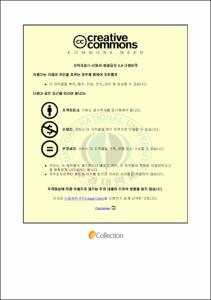初等學校의 Void Space를 통합적 활동공간으로 활용하기 위한 요인분석에 관한 연구
- Alternative Title
- A study on analyzing factors for utilizing Void Space of the elementary school to the mixed activity space
- Abstract
- Behaviors of elementary school children are affected by conditions. Most of development of educational factors by spaces are the uniform or haven't equipped the support factors for various behaviors by the environment focused on the education for the internal growth. As a result, children only promote the intelligent and perceptual growth simply, forming an all-rounded education required to the growing time is poor.
And it analyzes conditions by using Void Space from spaces of the school which children can many-side activities, find how children use it by the hypothesis testing. Also it looks for reasons that children don't have interest in activity structures meeting to their aptitude and turn away their eyes to other un-appointed activity spaces, and studies on the space orienting integrated activities which can grow mixed activities, not but play behaviors learning simply. In analysis, ages of children in the elementary time are limited 8∼13 years. Such a limitation is required to introduce the effective research through selecting the proper time in the growth and development time for analyzing aptitude and using behaviors of children required to this study. Because it isn't mean that attracting interest for plays from children sets structures in big volume. Also, it is reasons that they want materials which can be created by their-selves more than fixed structures and scale and form of playing structures have to meet requirements of physical development and exercises of children rather than to meet the eye level and preference of adults.
This study is based on investigating the growth and the development to meet the aptitude and the time of children by research for its literature, analyzing using behaviors for utilizing spaces required to children, and changing many-side issues and integrated utilizing spaces for plays. By these advanced research, it reviews whether the utilizing value is sufficient or not by analyzing cases related to suitability for using spaces of Void Space which can adapt the activity space required to children into the school. Also the way of thinking considered characteristics of user oriented design leads to create the social culture, and improves the quality of life to children. With micro view, it is re-interpreted the mixed activity space according to the social change, using behaviors of children are considered by the advanced research.
It conducts to analyze cases by observing actions and the checklist focused on children's characteristics with the above ways. In addition, it promotes the divergent thinking to children by providing new experiences of each structure according to motions and actions of children, give motivation un-limitedly to stretch the creative development and the various activities. It re-arranges the existing space and the social conditions for forming the mixed activity space introduced activities, then will be the base that can suggest the mixed space which can create many-sided utility from simple one-sided satisfaction of desires.
- Issued Date
- 2012
- Awarded Date
- 2012. 2
- Type
- Dissertation
- Publisher
- 부경대학교 일반대학원
- Alternative Author(s)
- Park, Ji Young
- Affiliation
- 일반대학원
- Department
- 대학원 산업디자인학과
- Advisor
- 김명수
- Table Of Contents
- Ⅰ. 서 론 1
1. 연구배경 및 목적 1
2. 연구내용 및 구성 2
Ⅱ. 어린이활동의 다각적 쟁점 4
1. 어린이활동의 사회적 인식 4
2. 다시각적 요인분석 6
3. 사회여건의 재해석 7
4. 어린이 활동의 가치변화 9
5. EQ중심의 어린이행태 17
Ⅲ. 활동공간의 경향 23
1. 활동공간의 변화 23
2. 어린이가 선호하는 활동공간 27
3. 활동공간의 구성요소 30
4. 활동하는 어린이행태 33
5. 활동공간의 물리적 제약 35
Ⅳ. 초등학교의 Void Space의 재조명 38
1. Void Space의 선정기준 38
2. 초등학교의 외부구성 39
3. Void Space의 현장화 44
Ⅴ. Void Space특성의 상관성 56
1. Void Space의 인식 56
2. Void Space의 시지각적 분석 60
3. Void Space의 구조특성 70
4. 어린이와 Void Space의 상관도 85
5. Void Space의 양상 89
Ⅵ. Void Space의 타당도 분석 93
1. 유형별 검증설정 93
2. 표본선정 96
3. 활동공간의 가설검증 97
4. 학교별 신뢰도 및 요인분석 101
Ⅶ. 어린이의 행태경로 109
1. 경로모형의 적합도 검증 109
2. 경로모형의 유의도 110
3. 경로모형의 인과효과 112
Ⅷ. 어린이를 위한 공간의 새로운 가능성 114
1. 추구하는 새로운 공간 114
2. 어린이의 공감각 117
3. 통합적 활동공간의 방향 120
4. Void Space의 재구성 121
Ⅸ. 결 론 127
1. 결론 127
참고문헌 131
ABSTRACT 136
부 록 139
- Degree
- Doctor
- Files in This Item:
-
-
Download
 初等學校의 Void Space를 통합적 활동공간으로 활용하기 위한 요인분석에 관한 연구.pdf
기타 데이터 / 5.06 MB / Adobe PDF
初等學校의 Void Space를 통합적 활동공간으로 활용하기 위한 요인분석에 관한 연구.pdf
기타 데이터 / 5.06 MB / Adobe PDF
-
Items in Repository are protected by copyright, with all rights reserved, unless otherwise indicated.